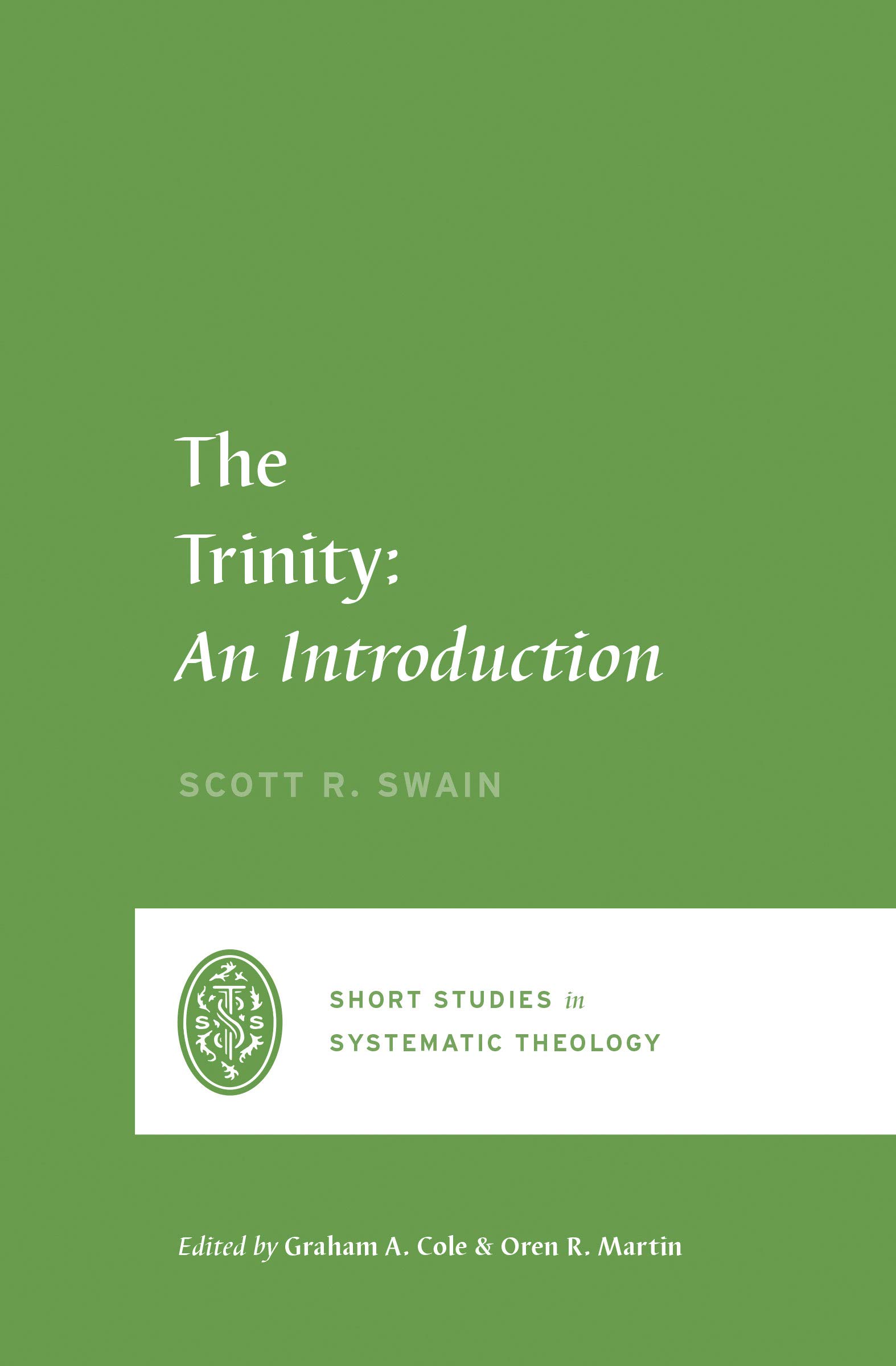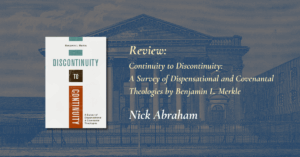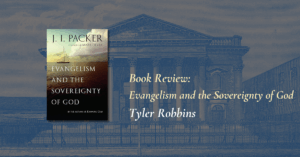The Trinity: An Introduction (hereafter, TTAI) is part of Crossway’s “Short Studies in Systematic Theology” series. The purpose of this series, according to Crossway, is to “connect the resurgence of biblical theology at the academic level with everyday believers.”
Swain’s purpose for the book is stated in terms of what I see as a specific intent and an overarching design. In the introduction, he outlines the first of these as a cultivation of “greater fluency in following the basic ‘grammar’ of Scripture’s Trinitarian discourse.” The purpose of this fluency is threefold: (1) distinguish “the true and living God from idols”; (2) “shape our capacities for receiving and responding to the blessed Trinity as he presents himself to us in his word…”; (3) “promote fellowship with the triune God, the sovereign good of systematic theology”.
With respect to the second overarching design of TTAI, Swain’s desire is to serve students, pastors, and interested laypersons. His hope is that, for these targeted readers, they might “enter more fully into the praise of the triune name into which we are baptized” (20). Specifically, his exhortation to the reader in this regard is that her praise and apprehension of the Holy Trinity be not that of a spectator, but that her exercise of praise and apprehension be more “self-involving.”
TTAI remains faithful to these stated goals. The reader is led into both a place of contemplation and praise of the Holy Trinity. It does so, importantly (given the targeted audience of the book), by striking a great balance between brevity and detail. In fact, given his success in this regard, I suspect many readers will be inspired into a deeper pursuit of the Holy Trinity—both in praise and contemplation.
To wit, TTAI provides a very helpful “pattern of speech” that facilitates a handy way to grasp the proper distinctions to be made between that which is proper to the three persons of the Trinity, and that which is proper to the divine essence or substance of the Trinity. Specifically, he introduces the reader to “proper predications” and “common predications” (34). Such crucial distinctions give the reader tools to obtain greater understanding and, consequently, engage in greater praise.
Generally, TTAI meshes quite well with writings on the Trinity by authors such as Fred Sanders, Stephen Holmes, Brandon Smith, Luke Stamps, Matthew Barrett and others. Broadly, this is for several reasons.
First, in step with his Protestant roots, the truth of the Holy Trinity is said to be adumbrated in the Old Testament and present in the New Testament. Swain states, for example: “Christians praise the triune God because that is how God presents himself to us in Holy Scripture: as one God in three persons, the Father, the Son, and the Holy Spirit”(20).
Secondly, there is a recognition and embrace of the contributions of Patristic and Medieval influences on the doctrine. Swain encourages the reader, for example, to take the Trinitarian creeds of the early church “…on [her] own lips”, and then “gladly join the church’s chorus of Trinitarian praise” (27). In his “Further Reading” section, he even recommends books on the Trinitarian theology of Thomas Aquinas and Gregory Nazianzus. Such influences push back against a subjective and isolated Biblicist approach to the doctrine of the Trinity that persists within some Protestant circles. This pushback is measured, though. TTAI emphasizes, for example, that these influences didn’t improve “a latent or undeveloped biblical Trinitarianism” (26-27).
Although TTAI is a good introduction to a very specific model of the doctrine of the Trinity, there are some missed opportunities.
For example, the uninitiated reader might come away from TTAI with the idea that the model of the Trinity outlined in its pages is THE doctrine of the Trinity. There is no mention of the constellation of views on the doctrine that exist and have existed for nearly two thousand years (though certainly all share many commonalities). Swain does make clear that TTAI will not focus on the history of the doctrine. But surely just a brief mention that historically there exists some flexibility on the doctrine would be helpful to the reader as she continues to seek understanding and wrestle with this doctrine. Granted, TTAI does briefly mention one difference—the Filioque controversy.
The reader would have also benefited from clearly defined uses of the word “God”. Throughout TTAI, the Trinity is “God”, the Father is “God”, the Son is “God”, and the Holy Spirit is “God”. How do these predications of “God” fit within Swain’s “proper predications” and “common predications” concept? Are these uses of “God” meant to be taken the same way? If not, how are they different?
Elsewhere he calls the persons “modes of existence”—presumably, for him, of the one God, the Trinity. Does his use of “God” for the three persons mean “a divine mode of existence”? Does Scripture use the word “God” this way? Certainly, the targeted reader will want to make sense of this God-talk with respect to the Bible.
Related to this, Swain often speaks of the Trinity as a “he” while also speaking of the Father, Son, and Holy Spirit each as “he’s”. That’s four “he’s”—one for each person and the divine nature. Is the divine nature a person and/or a “he”? Is the “Trinity” a person and/or a “he”? How does “he” the Trinity differ from the “he’s” of the Father, the Son, and the Holy Spirit? For that matter, what does it mean for each of these to be a “he” on Swain’s model?
Finally, there are two features of today’s Trinitarian theological landscape that should, in my opinion, be part of any introduction to the Trinity. They are not present in TTAI and so are two additional missed opportunities to edify the reader.
The first is the rise, influence, and contributions of Analytic Theology to the doctrine of the Trinity. For example, on page 60, Swain asserts that “…the grammar of divine simplicity requires us to affirm that each divine person is identical with the one God in all his fullness.” This is an identity statement and is loaded with entailments. What type of identity is Swain asserting here? If the persons have no properties of their own or “formal distinctions” and are only “relations of opposition” or “modes of existence”, then a strict identity statement could derail his entire model of the Trinity. At least a mention of these issues and the relevance of Analytic Theology to their possible resolution would be worthwhile. TTAI could simply point the reader to additional resources on the topic.
The second feature of today’s Trinitarian landscape is the rise of Biblical Unitarianism. Its influence on Trinitarian discourse, especially on social media, is significant. TTAI would have served the reader well to occasionally deal with Biblical Unitarianism interpretations at opportune moments throughout the book. It is quite likely that many of the targeted readers of TTAI have already encountered them.
In spite of these missed opportunities, TTAI is a recommended read for anyone challenged by the doctrine and seeking some clarity and assurance. Swain introduces the reader to complex but necessary topics–such as simplicity. Yet he also demonstrates the centrality of Scripture to the doctrine. The highlight of the book for me is that the Father, the Son, and the Holy Spirit each get their own chapter. A feature that flows out of the centrality of Matthew 28:19 to Swain’s approach: “Go therefore and make disciples of all nations, baptizing them in the name of the Father and of the Son and of the Holy Spirit”.
Editors Note: The London Lyceum confesses the 2LCF. If the content of the book rejects the 2LCF at any point, we find reasons for concern and the need for revision. However, it is not the mission of the London Lyceum to always publish work that agrees with our confession of faith. We seek to generate thinking and foster an intellectual culture of charity, curiosity, critical thinking, and cheerful confessionalism.



